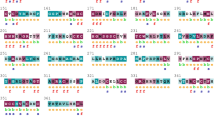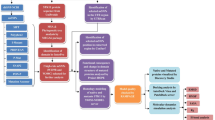Abstract
Fibroblast growth factor receptor 2 (FGFR2) controls a wide range of biological functions by regulating the cellular proliferation, survival, migration and differentiation. A growing body of preclinical data demonstrated that deregulation of the FGFR signalling through genetic modification was observed in various types of cancers. However, the extent to which genetic modifications interfere with gene regulation and their involvement in cancer susceptibility remains largely unknown. In this work, we performed in silico profiling of harmful non-synonymous single nucleotide polymorphisms (SNPs) in the protein kinase domain of FGFR2. Tolerance index, position-specific independent count score, change in free energy score (ΔΔG), Eris and FoldX indicated that seven mutations were found to be deleterious and may alter the protein function and structure. Furthermore, based on physico-chemical properties, two mutations K659N and R747H were found to be most deleterious in protein kinase domain and taken for further structural analysis. Docking study showed a complete loss of binding affinity followed by interference in hydrogen bonding and surrounding residues due to K659N and R747H mutations. In order to elucidate the mechanism behind the impact of mutation that can generate a ripple effect throughout the protein structure and ultimately affect the function, in-depth molecular dynamics simulation and principal component analysis were performed. The obtained results indicate that K659N and R747H mutations have a distinct effect on the dynamic behaviour of FGFR2 protein. Our strategy may be helpful for understanding SNP effects on proteins with function and their role in human genetic diseases and for the development of novel pharmacological strategies.





Similar content being viewed by others
Abbreviations
- SNP:
-
Single nucleotide polymorphism
- nsSNPs:
-
Non-synonymous single nucleotide polymorphisms
- GWAS:
-
Genome-wide association studies
- aa:
-
Amino acid
- AS:
-
Apert syndrome
- FGFRs:
-
Fibroblast growth factor receptor
- FGFR2:
-
Fibroblast growth factor receptor 2
- KD4v:
-
Comprehensible Knowledge Discovery System for Missense Variant
- MD:
-
Molecular dynamics
- MSV3d:
-
Missense variant mapped to 3D structure
- NCBI:
-
National Centre for Biological Information
- OMIM:
-
Online Mendelian Inheritance in Man
- PSIC:
-
Position-specific independent count
- ΔΔG :
-
Change in free energy
- SIFT:
-
Sorting Intolerant From Tolerant
- PolyPhen 2.0:
-
Polymorphism Phenotyping V 2.0
- PCA:
-
Principal component analysis
- PDB:
-
Protein Data Bank
- BLAST:
-
Basic local alignment search tool
- SVM:
-
Support vector machine
- ILP:
-
Induction logic programming
- RMSD:
-
Root mean square deviation
- RMSF:
-
Root mean square fluctuation
- SASA:
-
Solvent accessibility surface area
References
McIntosh, I., Bellus, G. A., & Jabs, E. W. (2000). Cell Structure and Function, 25, 85–96.
Ibrahimi, O. A., Eliseenkova, A. V., Plotnikov, A. N., Yu, K., Ornitz, D. M., et al. (2001). Proceedings of the National Academy of Sciences of the United States of America, 98, 7182–7187.
Johnson, D., Wall, S. A., Mann, S., & Wilkie, A. O. (2000). European Journal of Human Genetics, 8, 571–577.
Rutland, P., Pulleyn, L. J., Reardon, W., Baraitser, M., & Hayward, R. (1995). Nature Genetics, 9, 173–176.
Lemmon, M. A., & Schlessinger, J. (2010). Cell, 141, 1117–1134.
Easton, D. F., Pooley, K. A., Dunning, A. M., Pharoah, P. D., Thompson, D., et al. (2007). Nature, 447, 1087–1093.
Hunter, D. J., Kraft, P., Jacobs, K. B., Cox, D. G., Yeager, M., et al. (2007). Nature Genetics, 39, 870–874.
Huijts, P. E., Vreeswijk, M. P., Kroeze-Jansema, K. H., Jacobi, C. E., Seynaeve, C., et al. (2007). Breast Cancer Research, 9, R78.
Luu, T.D., Rusu, A., Walter, V., Linard, B., Poidevin, L., et al. (2012). Nucleic Acids Research, (Web Server issue), W71-5.
Natarajan, K., & Senapati, S. (2012). PloS One, 7(8), e42351.
Gozgit, J. M., Wong, M. J., Moran, L., Wardwell, S., Mohemmad, Q. K., et al. (2012). Molecular Cancer Therapeutics, 11, 690–699.
Amberger, J., Bocchini, C. A., Scott, A. F., & Hamosh, A. (2009). Nucleic Acids Research, 37, D793–D796.
Sherry, S. T., Ward, M., & Sirotkin, K. (2001). Nucleic Acids Research, 29, 308–311.
Amos, B., & Rolf, A. (1996). Nucleic Acids Research, 24, 21–25.
Ng, P. C., & Henikoff, S. (2003). Nucleic Acids, 31, 3812–3814.
Adzhubei, I. A., Schmidt, S., Peshkin, L., Ramensky, V. E., et al. (2010). Nature Methods, 7, 248–249.
Capriotti, E., Fariselli, P., Rossi, I., & Casadio, R. (2008). BMC Bioinformatics, 9, 2–S6.
Guerois, R., Nielsen, J. E., & Serrano, L. (2002). Journal of Molecular Biology, 320, 369–387.
Yin, S., Ding, F., & Dokholyan, N. V. (2007). Nature Methods, 4, 466–467.
Chen, H., Xu, C. F., Ma, J., Eliseenkova, A. V., Li, W., et al. (2008). Proceedings of the National Academy of Sciences of the United States of America, 105, 19660–19665.
Morris, G. M., Goodsell, D. S., Halliday, R. S., Huey, R., Hart, W. E., et al. (1998). Journal of Computational Chemistry, 19, 1639–1662.
DeLano, W.L., (2002). DeLano Scientific LLC, San Carlos
Berendsen, H. J. C., Van der Spoel, D., & Van Drunen, R. (1995). Physics Communications, 91, 43–56.
Schüttelkopf, A. W., & van Aalten, D. M. (2004). Acta Crystallographica, 60, 1355–1363.
Amadei, A., Linssen, A. B. M., & Berendsen, H. J. C. (1993). Proteins, 17, 412–425.
Mendell, J. T., & Dietz, H. C. (2011). Cell, 107, 411–414.
Stenson, P. D., Mort, M., Ball, E. V., Howells, K., Phillips, A. D., et al. (2008). Genome Med, 22, 1–13.
Rajith, B., & George, P. D. C. (2011). PloS One, 6(9), e24607.
George, P. D. C., & Rajith, B. (2012). PloS One, 7(4), e34573.
Thusberg, J., & Vihinen, M. (2009). Human Mutation, 30, 703–714.
Hicks, S., Wheeler, D. A., Plon, S. E., & Kimmel, M. (2011). Human Mutation, 6, 661–668.
Cline, M. S., & Karchin, R. (2010). Bioinformatics, 27, 441–448.
Jordan, D. M., Ramensky, V. E., & Sunyaev, S. R. (2010). Current Opinion in Structural Biology, 20, 342–350.
Fetrow, J. S., Knutson, S. T., & Edgell, M. H. (2006). Proteins, 63, 356–372.
Le, L., Lee, E., Schulten, K., & Truong, T. N. (2009). PLoS Curr, 1, RRN1015.
Salsbury, F. R., Jr., Crowder, M. W., Kingsmore, S. F., & Huntley, J. J. (2009). Journal of Molecular Modeling, 15, 133–145.
Kan, S. H., Elanko, N., Johnson, D., Cornejo-Roldan, L., Cook, J., et al. (2002). The American Journal of Human Genetics, 70, 472–486.
Chen, H., Ma, J., Li, W., Eliseenkova, A. V., Xu, C., et al. (2007). Molecular Cell, 27, 717–730.
Greulich, H., & Pollock, P. M. (2011). Trends in Molecular Medicine, 7, 283–292.
Turner, N., & Grose, R. (2010). Nature Reviews. Cancer, 10, 116–129.
Acknowledgments
The authors take this opportunity to thank the management of Vellore Institute of Technology University for providing the facilities and encouragement to carry out this work.
Conflict of Interest
The authors declare that we do not have a conflict of interest.
Author information
Authors and Affiliations
Corresponding author
Rights and permissions
About this article
Cite this article
C, G.P.D., Rajith, B. & Chakraborty, C. Predicting the Impact of Deleterious Mutations in the Protein Kinase Domain of FGFR2 in the Context of Function, Structure, and Pathogenesis—a Bioinformatics Approach. Appl Biochem Biotechnol 170, 1853–1870 (2013). https://doi.org/10.1007/s12010-013-0315-y
Received:
Accepted:
Published:
Issue Date:
DOI: https://doi.org/10.1007/s12010-013-0315-y




